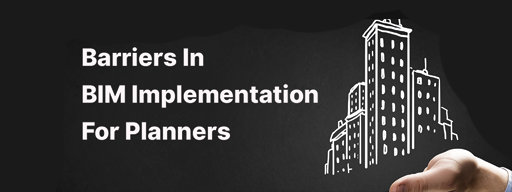BIM for Architects – Implementation Phase
Building Information Modelling (BIM) may seem like a tedious process, but, in the long run, it is beneficial to you and your business. BIM enables better collaboration amongst designers, engineers, architects and contractors. It streamlines the process and makes everything much more manageable.
At the implementation phase, BIM can be quite daunting. This is why we have developed a list of dos and don’ts for architects. This useful guide will help you to understand the ins and outs of BIM and how to get the best out of implementing BIM.

BIM For Architects: The Dos At The Implementation Phase
First, let’s look at what you should do at the implementation phase and how you can get the most out of BIM.
1. Analyse your core business and define use cases
It is essential to understand which activities you do in your business. If you only design, you may have fewer possibilities with BIM than if you perform a range of services with more technical processes. For example, do you do construction planning, cost estimation and other vital analyses as well?
Knowing your core business offering lets you define use cases for BIM. For instance, as a designer, you would optimise your presentation models (VR, rendering, etc.). If you offer more than design, you would go more in-depth with your information to plan and conduct efficient cost estimations.
Once you define use cases, you can better understand what needs to be done and how you can implement BIM most effectively.
2. Look out for partners
Aligning BIM data structure with partners creates a lot of synergies. It results in smoother, faster collaborations and gives you a competitive advantage.
Partnering is a management approach that encourages openness and collaboration between the parties in the contract. For projects to be a success, partners have to depend on each other. As such, it facilitates better communication and collaboration to ensure that both parties benefit from the project.
So look out for potential partnerships that you could benefit from when implementing BIM.
3. Standardisation
For successful BIM implementation, you need to standardise all processes and data structures. Many architects think that this would have negative effects on their freedom in design. However, the opposite could be true.
When you standardise processes, you will encounter fewer recurring issues. As a result, you will actually have more time to spend on design. Standardising your processes and data structures saves time on all the nitty-gritty details. With more free time to play with the design, you can take more liberties with it and test out different aspects of your design.
Standardisation does not need to bog you down. Rather, it frees you to work on innovation and quality. This also means that your clients will be happier as they receive top-quality work.
4. Talk to your team and tell them the why
BIM implementation brings a lot of change, which can cause uncertainty within your team. So, it is important that you tell them why you’re implementing BIM and how it can benefit everybody. You need to motivate them and support them so that they are more open to learning and adopting BIM.
Make sure that they understand why implementing BIM will be a positive change and how it can enhance their performance. Be open about your strategies and how you plan to use BIM in the future.
BIM for Architects – The Don’ts At The Implementation Phase
Now that we have gone over the dos, let’s look at the don’ts. These are the things to avoid when implementing BIM for architects.
1. Don’t compare BIM to CAD
BIM requires new tools and processes as well as an entirely new way of thinking. As such, you should never compare it to computer-aided design (CAD). CAD was not the invention of a new approach that changed the process when compared to hand drawing. But, BIM is a significant change in the way a team collaborates and works together.
BIM implementation is less likely to succeed if you compare it to other processes like CAD. When you compare, you can get frustrated with the differences. Not to mention, it will limit your team’s understanding of BIM.
Remember, BIM implementation is a long process. It can be tiring, but it pays off in the end as you will get better results than other processes.
2. Don’t make BIM a side project
BIM implementation can’t be a side project. Make a conscious decision to implement BIM in your firm. If it’s just a side project without clear expectations, it will not be successful.
BIM is a process that changes the way you view your projects. To get the most out of it, it needs to be the primary process you use.
3. Don’t sell it as an additional effort
You may have to spend more time on BIM projects initially, but don’t sell it as an additional effort. You will be more successful if you sell your BIM service as a high-quality offer that deserves a higher price. This is because by using BIM, your performance will increase and your quality of work will be higher.
Another way to make sure that all the effort is worth it is to offer more services either in-house or with partners. This will make everything more efficient and your client won’t have to pay much more overall.
Although BIM may require some additional effort at first, it makes it easier to sell your service at a higher price point. As you use BIM, you will notice that your collaboration and performance will increase, accounting for the additional cost when you first implement it.
Conclusion – BIM for Architects
BIM is a collaborative process that allows you to streamline your work better. Although daunting, it is time to embrace BIM. This guide of dos and don’ts should help you get started in your journey to BIM for architects.
Just remember, implementing BIM is an ongoing process that requires constant re-evaluation. Luckily, you can make BIM implementation easier with the help of bimspot.



